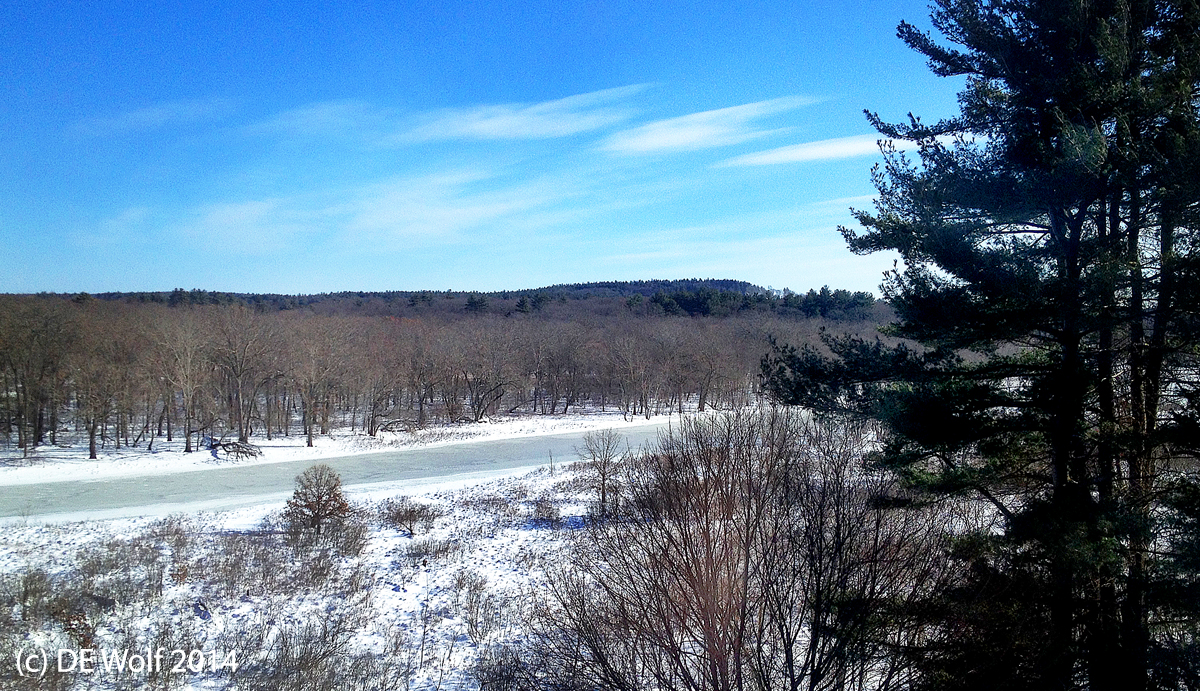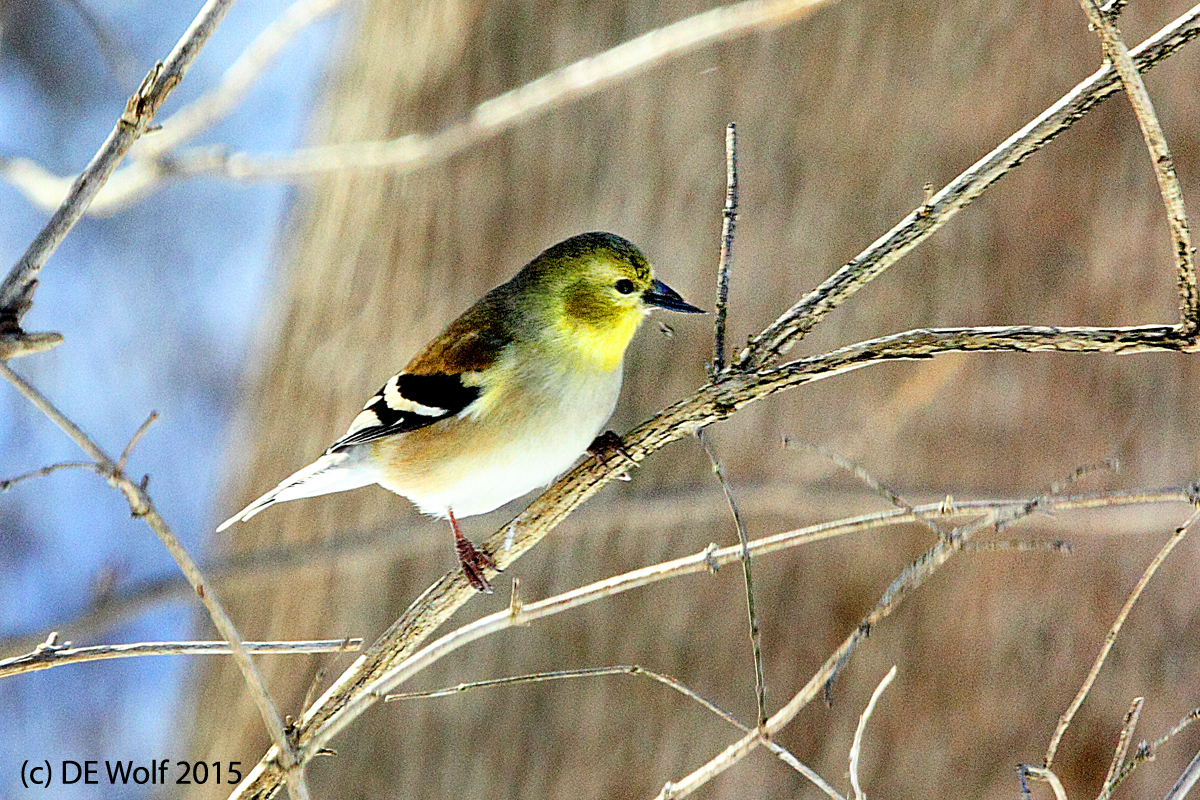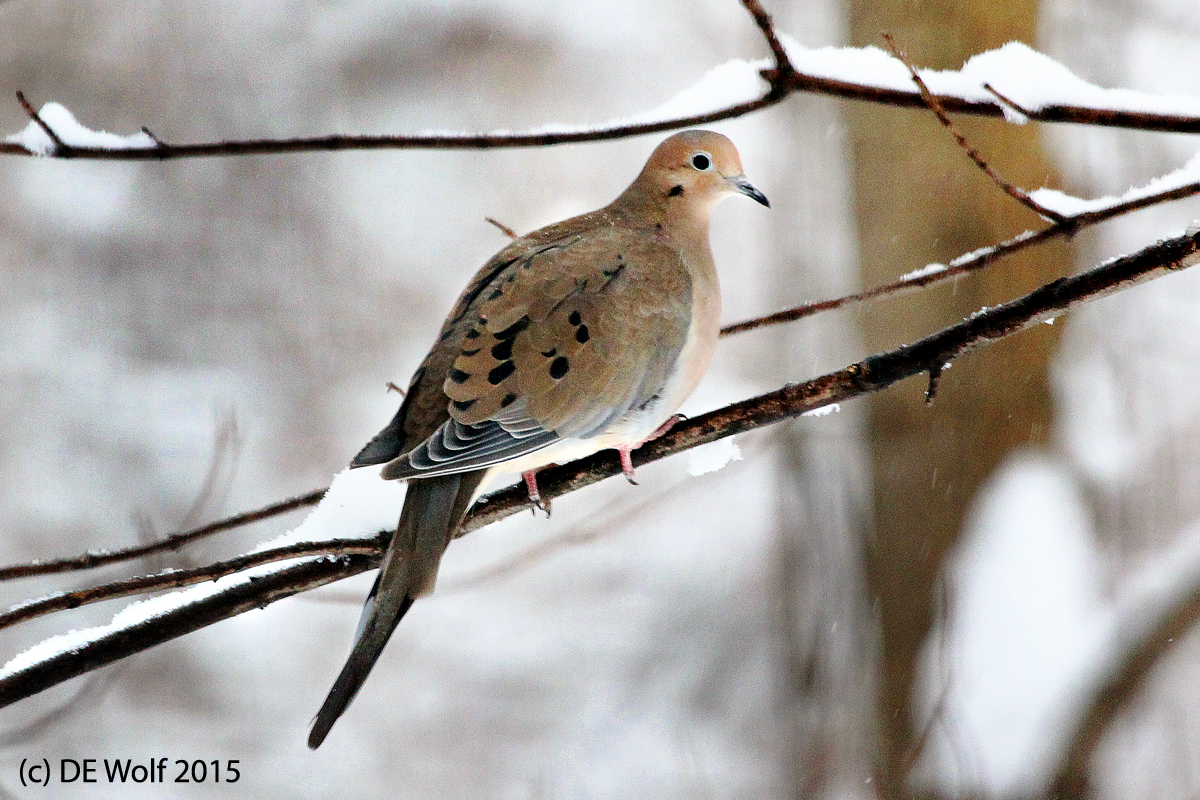OK, so Monday morning and snowing again. Welcome to New England, in all its spectacular winter glory. I found myself yesterday with a most excellent view of the historic and very frozen Concord River and only my IPhone to record it. This is the land of Emerson, Alcott, and Thoreau. So please accept Figure 1 for what it is. Merely a tourist’s snapshot, appropriately taken with a cell phone. This just in case you are wondering why we put up with this kind of weather. It is so, so beautiful and we love it.
Author Archives: David
Cityscapes
One of the weekly photocolumns that I follow pretty closely is the reader photos to a preset theme. This week’s theme was “City Skylines” and there are some really wonderful submissions. I particularly like Michael Kennan’s spectacular skyline of Seattle from Queen Anne Hill. Then there is Jane Barrett’s cleverly circularized image of the harbor in Stockholm. But my admiration doesn’t stop there. There is a really interesting image by Owen Bowler of the Spinnaker Tower in Portsmouth reflected off the water. This is a particularly subtle and clever variation of the distorted reflection genre of architectural photographs. Finally among my favorites is Daniel Furon’s moody and wonderful image of the San Francisco skyline. Honestly, I have seen a lot of beautiful photographs of San Francisco over the years. This one takes my breath away.
American goldfinch – spinus tristis
At this time of year, the beautiful American goldfinches are pale shadows of their late summer selves. They are however, grateful visitors to my feeder, and unlike many of the more frenetic birds, they seem to sit politely at the feeding stations, like well-behaved dinner guess. Of course, sitting with their heads buried in the feeder is hardly they way yu want to photograph them The fellow pictured in Figure 1, with his prized sunflower seed, had a cowl of gold that very much exceeded that of most of his peers. Perhaps he is a Boston Bruins fan. What has most intrigued me is that if I take a picture of even the palest goldfinch, I find that with just a little boosting of the color saturation they become brightly yellow. No other adjustment is necessary. The color is there latent and subdued, ready to pop out – like the Yin of summer buried deep within the Yang of winter.
This image was taken hand-held and again through glass at 300 mm. The little birds are a bit demanding subjects. But I think that this was reasonably successful.
Canon T2i with EF100-400mm f/4.5-5.6L IS USM lens at 300 mm, ISO 1600, Aperture Priority A mode,1/160th sec. at f/11.0 with +1 exposure compensation
The Finish Line
As Bostonians we just naturally think of the city as the “Hub” of the universe. As a result, we also naturally expect that everyone knows and cares that we were hit on Tuesday by Nor’easter Juno, which dropped ~24 inches of snow on the Hub and about 30 inches out where I live. “Inches?” you ask. Yes, “inches!” Central to this kind of geocentricism is the view, widely held by Americans, that we should use a silly and antiquated measurement system, that is all together different from that used by the rest of the modern world. Hmm!
Anyway, there is one photograph that is going the explosive viral rounds on the internet showing a man clearing the finish line of the Boston Marathon in the midst of the storm. Not great photography, but powerful symbolism and meme.
The largest digital photograph
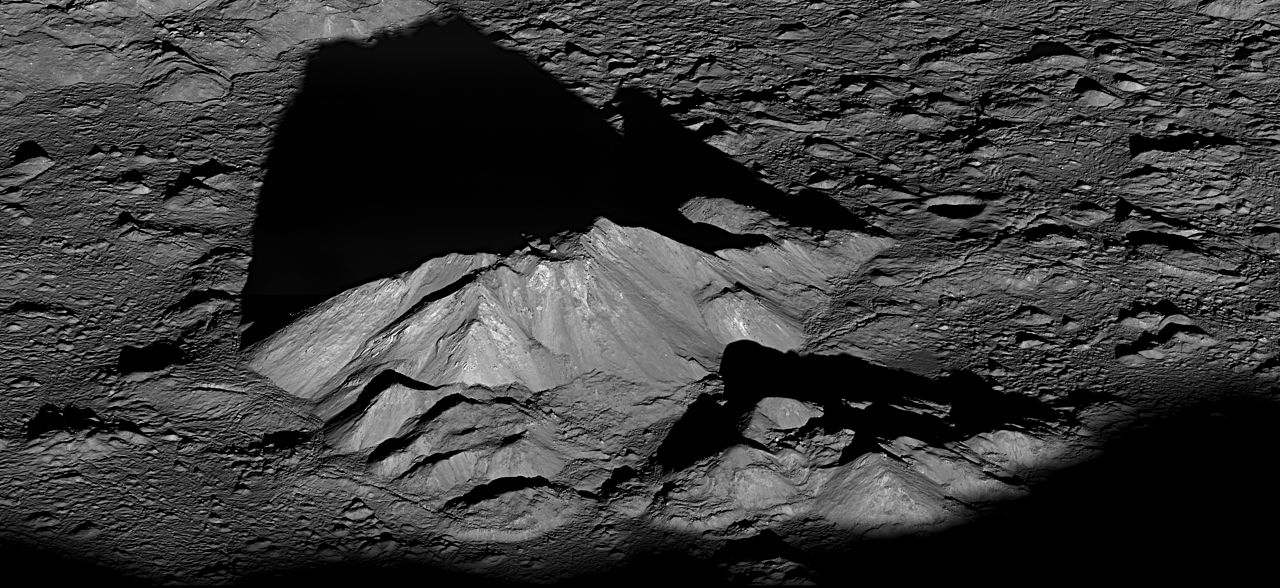
Figure 1 – “LRO Tycho Central Peak” by NASA / GSFC / Arizona State Univ. / Lunar Reconnaissance Orbiter – LRO. Licensed under Public Domain via Wikimedia Commons – http://commons.wikimedia.org/wiki/File:LRO_Tycho_Central_Peak.jpg#mediaviewer/File:LRO_Tycho_Central_Peak.jpg
A few days ago I wrote about NASA’s new photomontage of the Andromeda Galaxy taken by the Hubble Space telescope. At 4.3 Gb this is by today’s standards actually a pretty modest image. But it did get me wondering what exactly was the current record holder for world’s largest digital photograph. Well Wikipedia to the rescue! Wikipedia claims that when it comes to digital the largest image is also from NASA but is a high resolution map of the moon. It is 681 gigapixels, was taken by the Lunar Reconnaissance Orbiter over four years (2010 to 2013) and is composed of 10,581 images. This image of the lunar surface has its own website where you can zoom in and out and navigate to specific features. Figure 1 is a spectacular image a part of the composite of Tycho crater’s central peak complex casting a long, dark shadow at local sunrise. And the best part is that part of the mission’s purpose is to reconnoiter the dimensions of potential landing sites.
Mourning dove – Zenaida macroura
Figure 1 is another post-storm visitor, the unassuming but, I think quite elegant, mourning dove – Zenaida macroura. It is “mourning” not “morning” just like with Eugene O’Neill’s “Mourning becomes Electra.”The name mourning comes from the mournful sound that this dove makes, reminiscent of mourning at a funeral. But it has other names as well: turtle dove, American mourning dove, rain dove, and Carolina pigeon or Carolina turtledove. Turtle dove, appropriately conjurers up images of Christmas as two turtle doves was my true love’s gift on the second day. For some reason I am reminded of winter boy scout camp years ago and finding a rock hard frozen partridge.
What I like about them is that they are calm and understated. They were just sitting quietly in a tree watching the world. And in a subtle way they are beautiful. Here again I hand-held through glass – have been experimenting with that as it is the warm approach to bird photography, and here the sharpness was not an issue. I am also pleased with the falling flakes of snow from the branches on the right and by the warm earthy tone of the bird and the way that it complements the tree behind him.
Canon T2i EF100-400mm f/4.5-5.6L IS USM lens, IS on. ISO 1600, 1/400 sec at f/5.6 with +1 exposure compensation.
Eastern Bluebird – Sialia sialis
On my commute to work Thursday morning I passed a little bush that was filled with Eastern Bluebirds – Sialia sialis feasting on red berries. These little beauties are not really rare, but I have never seen them at my feeder and at that particular moment I wished that I had my camera with me and imagined standing in traffic snapping away happily.
Well, this Saturday morning I was rewarded or given a second chance. We had had the first major significant snowstorm of the season and at around seven I had ventured out to make sure that the feeder was full since the birds were likely to be ravenous. I was having coffee watching the feeder when to my delight a group of Eastern Bluebirds appeared.
I grabbed my camera, fitted it with my big lens, turned the IS on and broke all of own self imposed rules. 1. I handheld the camera. 2. I photographed through a pane of glass. Indeed, I wound up resting the lens against the window. And, in fact, one of the birds settled in a birch that was very close to me enabling the shot at 180 mm. I am pretty happy with the results of Figure 1.
Canon T2i EF100-400mm f/4.5-5.6L IS USM lens, IS on. ISO 1600, 1/400 sec at f/5.6 with +1 exposure compensation.
Photographs encased in ice
Hmm! It is a veritable winter wonderland outside. The snow is falling fast. The great thing about snowstorms on a Saturday morning is that you can drink your coffee and conemplate how beautiful it is, withput any concern about having to drive in it. 8<) And, of course, your mind is free to wander to colder and snowier places.
So it is very much to the point or on my mind that The New Zealand Antarctic Heritage Trust has announced the discovery of a cache of 100 year old negatives from the hut at Cape Evans built by Captain Robert Falcon Scott but used by Sir Ernest Shackleton’s Transanarctic Expedition which wintered there in 1915-1916. This is the other side of the story of the Worst Journey in the World.
The trust has found, and painstakingly restored and conserved a box of cellulose nitrate negatives found in the huts long abandoned darkroo,century-old photographic negatives found in a hut that served as base camp for the earliest Antarctic expeditions – literally frozen in time for a century. The cellulose nitrate negatives were clumped together in a small box in the hut’s long-abandoned darkroom.
The images are just a bit haunting in that they speak to us from isolation. Yes they are a time capsule. But even a century ago these explorers were isolate from the world, a world at the time exploding in the grip of the First World War.
Picturing Andromeda
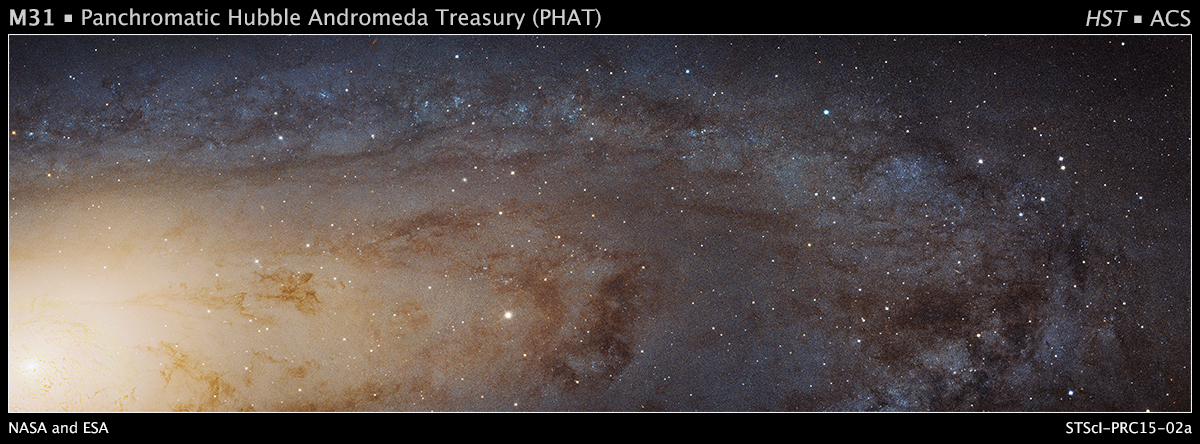
Figure 1 – Newly release photomontage of the Andromeda Galaxy, Messsier 31, taken by the Hubble Space Telescope, from NASA and the ESA.
Earlier this month, NASA released a mind blowing photomontage from the Hubble Space Telescope of the Andromeda Galaxy – a 4.3 Gb file.. This is the largest image ever assembled by the Hubble Space Telescope. At 2.5 million light years away, Andromeda is our nearest galactic neighbor. The image resolves something like 100,000 stars. Truly this is like photographing a beach and resolving the individual grains of sand. The image was assembled from 7,398 exposures taken over 411 individual pointings of the telescope.
To understand the enormity of the project and of the galaxy it is best to view it as a reconstructed flyby. But I have included a still of the image as Figure 1. I was amazed as I watched the video. The individual stars becoming denser and denser. And yet, Andromeda is a relatively small object in the sky.
Yesterday I was discussing with a colleague about how depressing it is that everything that you do on a computer, create a file or erase a file, contributes to the unstoppable increase in the entropy of the universe, that slow decline to absolute zero and nothingness. This image puts it in perspective. Look at that image of Andromeda and imagine all the galaxies out there including our own. What are we?

